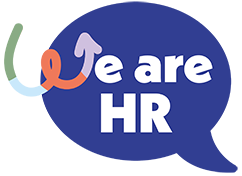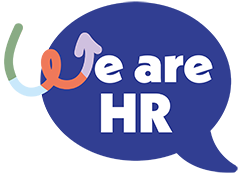Table Of Contents
What is a Skills Gap?
A skills gap represents the difference between the skills required to achieve organisational objectives and the actual skills that employees currently possess. For HR professionals, understanding and addressing these gaps is a critical part of workforce planning and development.
Skills gaps can include:
- Technical Skills: Proficiency in new HR software or compliance systems.
- Soft Skills: Areas like conflict resolution, leadership, or adaptability.
- Leadership Skills: The ability to lead teams effectively in dynamic environments.
Why Do Skills Gaps Matter for HR?
HR plays a pivotal role in identifying and mitigating skills gaps to ensure the workforce aligns with business goals. The rise of technology, shifting industry standards, and changing demographics often leave businesses lagging without the right talent. Recognising these gaps enables HR to maintain a competitive, compliant, and motivated workforce.
Is a Skills Gap a Problem for HR?
For HR professionals, a skills gap can pose significant challenges to organisational success:
How Skills Gaps Impact HR Operations
- Talent Retention: Employees who feel unsupported in their skills development may become disengaged and leave.
- Productivity: Without the right skills, teams fail to deliver on targets, impacting organisational performance.
- Workplace Compliance: A lack of expertise in regulatory areas can expose organisations to legal risks.
- Increased Costs: Reactive training programs or rushed recruitment can inflate budgets.
By addressing skills gaps, HR ensures a thriving workplace culture and efficient operations.
Why Should HR Conduct a Skills Gap Analysis?
A skills gap analysis empowers HR professionals to proactively address skills shortages, aligning employee capabilities with strategic objectives. It serves as a vital tool for effective workforce planning and development.
Benefits of a Skills Gap Analysis for HR
- Enhanced Recruitment: Pinpointing the exact skills needed helps HR recruit the right talent.
- Personalised Training Plans: Develop tailored learning pathways for employees to address specific gaps.
- Stronger Workforce Alignment: Allocate the right resources to the right roles for maximum impact.
- Change Management: Equip the workforce to adapt to industry changes and technological advancements.
By conducting a skills gap analysis, HR can shift from a reactive to a proactive approach, ensuring long-term organisational success.
Steps for HR to Conduct a Skills Gap Analysis
Step 1: Identify Required Skills
HR should assess both immediate and future skill needs based on organisational goals. This involves:
- Collaborating with leadership teams to understand strategic objectives.
- Analysing industry trends to identify emerging skill requirements.
Step 2: Prioritise Skills
Not all gaps demand immediate action. HR should categorise skills into:
- Critical: Essential for business continuity or compliance.
- Desirable: Beneficial for long-term growth.
Step 3: Assess Current Skills
Evaluate your workforce using HR tools such as:
- Performance reviews: Identify strengths and areas for development.
- Skills matrices: Map existing competencies against role requirements.
- Employee surveys: Gather direct insights into skill proficiency and training needs.
Document findings in a structured database for a comprehensive overview.
Step 4: Compare and Identify Gaps
Analyse discrepancies between required and existing skills. For HR, this step is crucial in differentiating between true skill gaps and performance issues.
Step 5: Develop an HR Action Plan
Create a plan to close the gaps. HR solutions may include:
- Upskilling programs: Focused training for existing employees.
- Recruitment: Hiring new talent to address critical shortages.
- Internal mobility: Reassigning employees to roles that better match their skillsets.
How HR Can Address Skills Gaps
HR professionals are uniquely positioned to bridge skills gaps by implementing targeted strategies. Here’s how:
1. Customised Training Programs
HR can design bespoke training initiatives to address specific technical and soft skill gaps. Options include:
- On-the-job training
- Online courses
- In-house workshops
2. Collaborative Recruitment
By leveraging insights from the skills gap analysis, HR can work with hiring managers to source candidates who bring the missing skills.
3. Fostering a Learning Culture
Encourage employees to embrace continuous professional development (CPD) through mentorship programs, peer learning, and certifications.
4. Leveraging Technology
Utilise HR tech solutions, like Learning Management Systems (LMS), to deliver personalised training experiences and track progress.
5. Building Academic Partnerships
Collaborate with educational institutions to bridge the gap between theoretical knowledge and practical application.
Conclusion: Future-Proofing the Workforce with HR Leadership
A positive Digital Employee Experience is no longer optional—it’s essential. By addressing technology frustrations, businesses can improve productivity, enhance employee wellbeing, and boost retention. Investing in proactive IT strategies not only resolves current issues but also prepares organisations to meet the future needs of an increasingly tech-reliant workforce.
Technology should empower, not hinder. With the right systems in place, businesses can create an environment where employees feel supported, motivated, and equipped to perform their best.
Conclusion
In today’s fast-paced business landscape, HR’s role in identifying and addressing skills gaps is more critical than ever. By conducting a skills gap analysis, HR professionals can ensure their workforce remains agile, engaged, and aligned with organisational objectives.
Proactively bridging skills gaps not only boosts productivity and employee satisfaction but also solidifies HR’s position as a strategic partner in organisational success.
About We-are-HR: Your HR Training Partner
At We-are-HR, we understand the challenges HR professionals face in bridging skills gaps. As a CIPD-approved training centre, we put learners first, offering flexible and customisable training solutions that cater to your workforce’s unique needs.
Whether you’re looking to upskill your team or enhance your own HR expertise, our diverse range of courses and packages ensures a perfect fit for every organisation. With our learner-first approach, we’re committed to helping HR professionals create impactful learning experiences.
Partner with We-are-HR to build a workforce equipped for success. Contact us today to explore our offerings!


